Iran is one of the Middle East countries with more than 5000 years of history and civilization and from the ten top tourism destinations in the world in terms of the numerous spectacular and historic attractions. Iran has 22 world heritage in UNESCO; but its recordable works are far more than these, and with the efforts made, more of these works can be recorded in near future. Before the Islamic Revolution, Iran was one of the main and first level destinations of tourists, but after the revolution, due to the existing limits and of course, incorrect and misleading propaganda of Iran because of political issues among the politicians, it fell to lower levels.
We want to prove that this country can be one of the top tourist destinations as in the past and with clarifying and proper explaining of the current restrictions for tourists in Iran, we will show you that with travel to Iran, not only you will not face any problem, but also you will experience one of the best travels in your life; your vision about this country and its people will completely change and the dark shadow of misleading propaganda of the medias for the political purposes of the politicians will be erased from your mind forever.
We have tried this guide to be a comprehensive and accurate guide for traveling to Iran and cover all the questions and required information for the travel. We have fully explained about visas and the ways to obtain Iran visa, determined the best time of travel, said about the security and the ways of safe travel to Iran, clarified the rules on clothing and hijab, written the currency and ways to reduce the costs, spoken about food and drink, and generally, we have explained everything you need for travelling to Iran.
Iran visa, how to get a visa, restricted or banned countries!
To travel to Iran, you must first obtain a visa for Iran and Iran visa is presented in various models of tourist, commercial, long-term, and multiple entries that we will explain tourist visa.
Obtaining tourist visa for Iran include two stages. The first stage is receiving Authorization Code that is performed online through the Iranian travel agencies and their websites; and the second stage is referring to one of the Iranian Consulates, providing Authorization Code received from the previous stage, and receiving the final stamp of the visa.
All passengers should receive Authorization Code before applying for a tourist visa. This code is a prerequisite for a visa. After receiving this code, you can apply for the final visa. For those who travel by group and by tour, in general, this code is automatically received by the tour and there is no need for the passenger to do anything. Otherwise, you can perform the stages of receiving this code through the existing online services or the Iranian travel agencies. The cost of issuing this code is about 35 Euro, different depending on the agency you choose and even, it may be more and it takes about three to fifteen workdays. PIN Iran will also do that for you (Refer to our services, Iran Visa).
To receive this code, you must determine which embassy you will refer for obtaining the visa stamp. Since it is not possible to change the embassy after issuing the code, you would better to select the city where you can access it. Iran has no embassy in some countries. The list of embassies will be available in the following. In addition, you can select visa-on-arrival or airport visa that of course, the citizens of about 180 certain countries can choose this option.
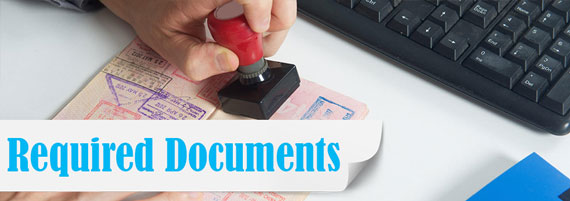
What documents are required to receive the Authorization Code?
Your scanned photo, your scanned passport, and a series of personal information about your job and travel plan to Iran are asked from you to receive an Authorization code that we recommend to answer them accurately and honestly. This information should be provided for each person individually. You can see the Information Receipt Form here.
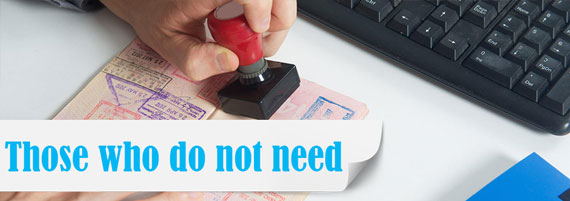
Citizens of the countries that do not need a visa
Citizens from Georgia, Bolivia, Azerbaijan, Turkey, Lebanon, and Syria can receive a stamp on Iran without Iran visa and only with a valid passport.
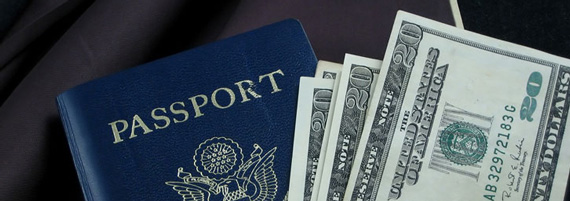
Visa Validation, Insurance, and Fees
The maximum duration for a tourist visa validation is 30 days. If you need some more days, you should go to Iran Tourist Polis to extend this time. With your Visa, you will charge a payment for trip insurance in Iran Embassies or Airport. this payment is change by trip duration and passengers age. In Iranian Airports, you will charge an Entrance Tax. The price for this tax starts from 80$.
The best time to travel to Iran
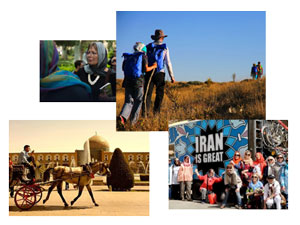
You have decided to travel to Iran, but do not know what is the best time and season for travel? To answer this question, you must first specify the reason and plan for your travel. Iran is a land of four seasons and different cities have different weather conditions in each season in the year. If we want to generally answer the question of the best time to travel to Iran, perhaps we should say that it is always the best travel time!
Iran has a very temperate spring, a relatively warm summer, a cool autumn, and a relatively cold winter; but the weather condition differs in different cities. A city like Hamedan has a very cold winter due to its mountainous location and it is not suitable for travel in winter, but summer is instead the best time to travel to this city because it has a cool pleasant climate, while other cities have very hot air! Cities like Yazd and Kerman have a very hot summer due to their desert location; instead, it is the best time to travel to these cities in the autumn or the early winter. Thus, it is better to first determine your destination and the cities you are going to visit, then by checking the weather and other parameters such as holidays, crowds, special days, etc. choose the best time to travel.
In general, spring is the best time to travel, especially middle spring, because of most tourist cities like Isfahan, Shiraz, Yazd, Kerman, etc. have pleasant weather. Of course, you should also pay attention to the official holidays of Iran. The largest holiday in Iran is the 15 first days of spring known as Nowruz Eyd and in these days, almost all Iranians are traveling and the spectaculars are very crowded. In addition, autumn is a suitable time to travel to Iran and weather is pleasant in many cities. Even it may be better than spring because many domestic people and tourists choose to spring for travel and for the same reason, the spectaculars are very crowded and hotels and accommodations are hard to find.
Safety in Iran and the ways of safe traveling
Safety may be one of your biggest concerns, especially regarding what you have previously heard on TV. You may be worried that when you are walking in the streets of Iran, suddenly your side person explodes! Put away all of these thoughts! These are like a joke for Iranians.
Iran is one of the safest countries in the world and it is not a lie if we say it is safer than many European countries for tourists. In Iran, weapons are banned and there is a lot of sensitivity on this issue. Then, it is very unlikely to see a gun unless the person is a police or security force. There is no explosion and assassination at all, and from many years ago, there have been no terrorist attacks in Iran.
The Iranian people are very kind and this is even truer about tourists. Most of the people like to be good to the tourists and then describe that for their friends and be proud of it! A single tourist, even a woman can easily travel in the cities and villages without being threatened by any danger. Safety is one of the things that are very different with the mentality of tourists before traveling; and surely, all people who have previously experienced travel to Iran, have been surprised. Ask them.
Worrying about being arrested?!
You may be concerned about the security forces of Iran and fear that you will be arrested by them! There is no such a thing; Iran’s government works very hard to attract tourists and the security forces have been trained to deal with the tourists and they are very flexible for them. If the government has a problem with your arrival, you cannot get a visa from the very beginning!
The only problem that may occur is a robbery that exists all over the world and you should be a little conscious. Of course, you will see robbery much less than other tourist areas and cities in the world; then, do not worry. Services and supplies are also a little more expensive for tourist compared to the local people but this is also preventable largely by observing some points existing on this site. Then, do not worry about security and spend your focus and time to obtain information about the other things.
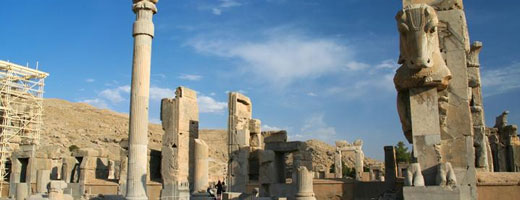
Things to do and tourist attraction of Iran
Iran has many attractions, historical, cultural, natural, and other attractions. As mentioned before, Iran has 22 worlds heritage works and except them, there are hundreds of attractions waiting for you. Just browse the internet to be acquainted with the best tourist attractions of Iran and plan your travel according to your interests. In addition, many tourist attractions have been introduced in PinIRAN and certain tour packets including visiting these attractions have been proposed (go to our services, tour packages).
Clothing restrictions and veil (hijab) observation
Iran is from the limited countries where hijab is mandatory and all women must observe the restrictions imposed on the type of cover. But do not be afraid! Let us just show our mean at the same beginning with a picture:
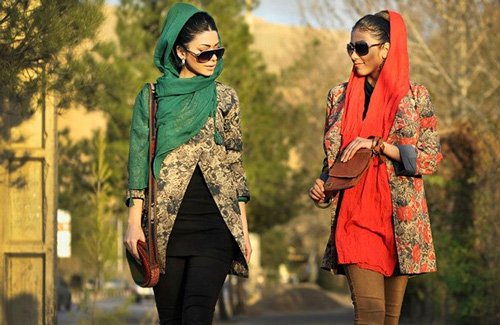
Well, as you saw, there is no need to wear a burqa or veil or a cloth that covers all your body! Just cover your body in public places, do not wear tight clothes, and cover some part of your hair with a scarf. In Iran, all women observe this clothing and it is interesting to note that sensitivity on this matter is not so much and more interestingly, tourists are immune more compared to Iranian women and it is very unlikely to get into trouble.
In the worst case, you will face a smiley note by a police officer! Iranian women are incredibly stylish and seemingly proud of themselves and this may be very different from what you have heard before and waiting for!
Few tips about clothes in Iran
- It is said that the clothes of tourists must be thick, but many Iranian women wear thin clothes during the hot season. Therefore, this is not too much worrying, using happy colors and thin clothes are very conventional. Of course, this sensitivity differs in different cities; consider it more in Isfahan, Mashhad, and Qom.
- If your scarf falls, do not worry, and return it as soon as you understand it. Just enough to be careful, your hair should be worn and there is sensitivity to this position, but you do not need to cover all your hair, covering some of the hair is enough, like many Iranian women you see.
- There is no problem with sandals and shoes, and the use of sports shoes is recommended because you may have a lot of walking during the day.
- Top and shirt should not be tight and the sleeve must cover at least three-quarters of the hand.
Public transport system in Iran
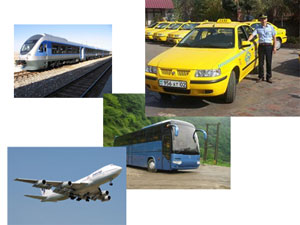
Iran does not have an advanced public transportation system. Traveling among various cities is possible by bus and its ticket can be ordered online. Domestic flights are a little more expensive than the bus and they can be also bought easily. Tehran has metro and it is available in almost all areas of Tehran and connects different areas in the city, but it is a little crowded. Also in Tehran, inner city buses called BRT are available.
Taxi is available everywhere and you can easily use it, but its cost is slightly more than bus and metro. Taxis are shared on certain routes; nevertheless, you can take a private taxi and ask the driver to reach you to the desired destination. There is no taximeter and we recommend you to talk to the driver about the fare before moving in order not to have trouble. Taxi fare is not much expensive and tipping a taxi driver is not too common.
There is also the possibility to rent a car in Iran; also, Europe car is active in Iran. If you would like, you can rent a car during your travel.
You can use our services to get airline tickets or buses or rent a car. Having a friend and local support (even by telephone) is also suggested to reduce shipping costs, as they will provide you with the best and cheapest way to travel.

There is no alcoholic beverage in Iran!
The only restriction on foods is alcoholic beverages. You may wonder, but you cannot find a bottle of beer at all. An alcoholic beverage is illegal in Iran. Nevertheless, there is also some variation in drinks. All types of Dough (yogurt drink), nonalcoholic beverages and beers can be ordered with fruit flavors. Even champagne exists in luxury stores and restaurants, of course, non-alcoholic champagne.
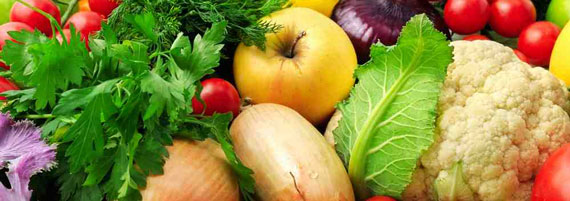
Vegetarians usually get into trouble!
Vegetarianism is not much conventional in Iran and finding vegetarian food is a little hard. Of course, there are many restaurants with vegetarian food in their menus; but this is not generally usual and you should have already research in this case and found the restaurants offering it. Your guide can also help you in this regard.
Food and Drink
Well, we reach a good part of travel. Iranian cuisine is very delicious and varied, provided that where and how to prepare it. There are plenty of good restaurants offering the best quality and price of Iranian cuisine, and some of them are featured on this website. In Iran, a number of foods are found everywhere, you know, they are national, and besides, each city has its own special food. We suggest that you do not miss these foods on travel to Iran: all kinds of kebabs, Qeymeh (stew), Qormeh Sabzi (stew), and Fesenjan (stew).
It is interesting to know that the way of preparing and the taste of food are different in different cities. For example, Fesenjan may have different taste in each city. If you want to find the best food, you should spend time and research before travel. For instance, Fesenjan in northern Iran is not comparable with anywhere else!
A city for belly enthusiasts!
We have a certain city in Iran whose food diversification is larger than everywhere else, and its food is more enjoyable than everywhere. It was added to the list as the UNESCO Creative City of gastronomy! It is Rasht in Gilan province in northern Iran.
If you care about food, be sure to visit this province during your travel. Take a trip to the local food markets and feel refreshed wholeheartedly. Sour Kebab, a variety of fish, local Fesenjan, local cuisine, and hundreds of unique cuisine can be only found in this province.
Iran’s Currency
The Iranian currency is officially Rial, but there is an unofficial currency used everywhere. It is very easy, by eliminating one zero from Rial, Toman is obtained. For example, 10000 Rials gets 1000 Toman! If we want to say more accurately, the same 1000 Toman is called 1 Toman in slang. This is unreasonable, and its main reason is the uselessness of these zeros in daily exchanges. For purchasing a coca, you should pay 20000 Rials! Is it not better to say 2 thousand Toman or 2 Tomans? So you do not say Rial because the person will be surprised; and if you buy something and the seller shows you 5 with his hand, he means 50 thousand Rial. Perhaps it may be a bit complicated; but by knowing the marginal price of some things, it will be much easier to understand the price that you will be told. In addition, in Iran, coins are very scarce and practically doing no work because they are worthless and you cannot buy anything by them!
In Iran, banknotes are available from 1000 Rials to 100000 Rials; but in practice, the banknote below 10000 Rial will not work and you cannot buy anything by them! There are also other models of banknotes in 500000 Rials and 1000000 Rials that are slangy known as travel cheque of just the travel (!), but they are not really cheque and they are the same banknotes and very common. Since you have to pay 500000 Rials to buy two simple sandwiches; thus, the best option will be the same travel cheque!
Maybe you are worried “I don’t have such money to travel!” do not worry, the zeroes are really useless! An American dollar will be about 40000 Rials! Of course, it is not so much money! You may be able to buy two Colas with it!
Some usual price of items and foods
In the following, the usual price of some items and foods are given to get you more familiar with the Iranian currency and to understand its value.
A typical sandwich: 150000 Rials
A typical pizza: 250000 Rials
An ice cream: 50000 Rials
A bottle of water: 15000 Rials
A tuna fish: 60000 Rials
One cup of coffee: 100,000 Rials (it is relatively expensive, since not being very common)
These are the usual prices, nevertheless, in some places, the price of these simple foods maybe so much higher, for example, airports or cafes, fast food hotels; if your travel budget is important and you are about to travel with the lowest costs, we recommend you not to buy from these places!
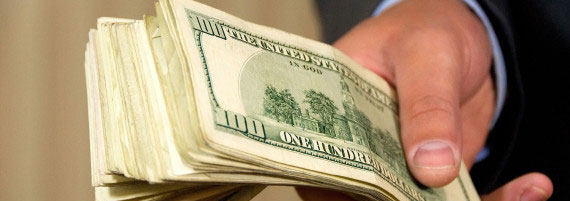
Like all countries in the world, Iran has its own souvenirs. Their most known are Persian carpet. The carpet that is woven by hand and its beauty and originality are unique in the world. Carpet is woven in some cities of Iran and from their most famous, we can refer to Isfahan, Kashan, Tabriz, and Yazd. Of course, carpet is one of the most expensive souvenirs of Iran and if you want to take it to your home, you should have put aside a lot of money.
There are also many crafts in Iran. Colored enamels, copper dishes, inlay, mosaic, and pottery are some of these crafts. In all Iran’s cities, you can find souvenirs, but it may be said that Isfahan is the center of buying souvenirs in Iran.
In Iran, for a tourist, the best and may be the only buying way is cash! In Iran, stores do not accept credit cards like Visa or MasterCard (Of course, we would like to accept them, but we are sanctioned).
An Iranian does not usually buy in cash, buying is common with bank credit cards, and its acceptor device (POS) is available in all stores. Nevertheless, these cards require a bank account in one of the Iranian banks that is not possible for tourists and if it is possible, it is time-consuming to open an account. One of the best ways is to use gift cards. All banks issue gift cards with a certain default credit and these cards are unnamed and usable in all receiver devices in stores. Of course, you cannot withdraw money from ATM by these cards. You can ask the guide to prepare a certain amount of gift card to avoid having the trouble of carrying cash.
If you are forced to carry cash, due to the security reasons, we suggest you never have much money with you and keep cash for one or two days and put the rest in a safe place like the safebox of the hotel. For each day, having a maximum of 3000000 Rials is OK, unless you are intended to buy an expensive souvenir.
Telephone and mobile system and important numbers in Iran
In Iran, the fixed and mobile telephone systems are available in almost everywhere even in remote villages and you will not have a problem in this case. There are several mobile operators in Iran whose most common ones are Hamrahe-Aval and Irancell. Like everywhere in the world, having a SIM card for a tourist is very easy and we recommend you get it at the beginning of your travel so that you can use it whenever you need.
The easiest way is to use the SIM card of Irancell operator that can be gotten in the airport and known as Tourist Simcard. This is a prepaid credit SIM card with a certain amount of credit and it can be easily recharged. It does not need activation and as soon as putting it in your cell phone, it is active and usable. Its price is between 20 to 50 thousands Rial and provides services such as voice calls, messaging, and the internet with a convenient rate. Do not worry about its antenna availability, because it is usable everywhere in Iran even the most remote areas. Only in remote areas, your internet speed may be low! To get this SIM card, your passport number is required.
Hotels usually try to provide high-speed internet for their guests and it is usually free during residence. You can ask the hotel reception about the internet. In addition, Wi-Fi internet is available in hotels. In the other areas, there is no free good internet in practice. However many stores have Wi-Fi internet, but it is just for themselves and they do not provide the password for anyone.
Perhaps, one of the best options is the same SIM card internet. If you have a SIM card, it usually has internet, it is available in different areas and different speeds, and it may work for you.
Phone number systems in Iran
In Iran, the mobile numbers start at 09 and in the following, nine other numbers come and this is common all over the country, i.e. a mobile phone number totally includes 11 digits. For example, 09121234567 is a mobile phone number. However, the fixed telephones have the certain pre-requisite for each city. For example, 021 is for Tehran and 031 is for Isfahan. The main number is an 8-digit number that follows this code. For example, 02125917070 is a fixed number for Tehran. To call a fixed number with your SIM card, you should enter its number fully. Of course, when you are in Iran, there is no need of dialing +98 that is Iran’s international code.
Emergency and Important Numbers
In many countries, you should call 911 for emergency call or police; but in Iran, police, emergency, fire brigade, etc. have their own certain numbers. These are 3-digit numbers and can be dialed from everywhere in the country. You would better to remember these numbers so you can use them when necessary.
Police: 110
Medical Emergency: 115
Fire brigade: 125
To call these numbers, even you do not need a SIM card, and they can be dialed with an empty phone.
Internet access in Iran
There is internet in Iran and it is common in all cities and even villages. Of course, it does not mean the high-speed internet you have probably experienced in your own country. The internet speed is low in Iran and this also depends on the city where you are. For example, in Teheran, the speed is fairly good compared to the other cities. Moreover, Iran’s internet has some restrictions. For instance, Twitter, YouTube, and Facebook are inaccessible and censored, but various websites, email, and many social media software like WhatsApp, Instagram, etc. are available.

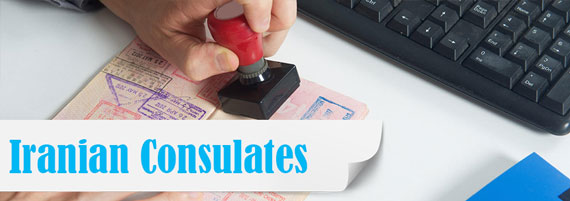
Leave a Comment